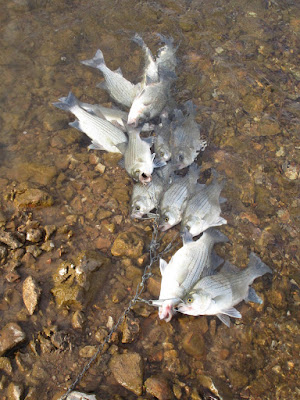 Rain crows came back to Lightning Ridge last
week, and now the spring ensemble of birds is complete. There are a lot of
species to see now, and an individual of one common species, acts way out of
character. A red-bellied
woodpecker has been drinking sugar water from the oriole feeder and seems to
really love the grape jelly we have out for the colorful orioles. I think it is just one individual, and
he has taken a liking to sweet stuff.
If you have seen any woodpeckers do the same thing, let me know.
Rain crows came back to Lightning Ridge last
week, and now the spring ensemble of birds is complete. There are a lot of
species to see now, and an individual of one common species, acts way out of
character. A red-bellied
woodpecker has been drinking sugar water from the oriole feeder and seems to
really love the grape jelly we have out for the colorful orioles. I think it is just one individual, and
he has taken a liking to sweet stuff.
If you have seen any woodpeckers do the same thing, let me know.
Doves feed beneath the feeders in large numbers and nest all around us. Several species of colorful grosbeaks come and go. I believe that over a thirty-year period I have witnessed about 40 species of birds here. The rarest involve one sighting of a road-runner and one sighting of a rare ‘pygmy’ brown-headed nuthatch that is not supposed to be within 300 miles of here. On my pond, a few hundred feet from my porch, there has been a dozen species of waterfowl and water birds that you might expect to see around a pond, and a couple you would never expect to visit it.
My pond provides fishing right out my back door, but Don Lewallen has the most phenomenal fishing I have ever seen just a hundred yards from HIS back door. Don owns the Three Oaks Resort, which sets on a high ridge overlooking Norfork Lake just a little ways from the Arkansas-Missouri line. His boat dock sits over 50 feet of water, down a steep mountainside. You go down there and back via tram, a cart on a track. At night underwater lights attract baitfish, primarily threadfin shad. And with those come crappie, bass, walleye, stripers, white bass, bluegill… you name it.
I paid him a visit the other evening and fished ‘til about midnight and caught four nice walleye, the biggest 21-inches long. He has seen some caught there about twice that size. Down by the bright green LED light, which is about ten feet under the middle of the dock, we watched huge fish swim around looking for an easy meal. Using the same small spoon, I caught walleye and nothing else… while Don caught 4 stripers, and one crappie. He lost the crappie at the surface, and it was easily a 16- to 18-inch fish. While usually you catch more crappie than any other species in the spring, that one was the only one there. For an hour we could watch him swim around below us and he would come close to three pounds, I think. Finally Don hooked him and I thought we were going to see a big black crappie, but he got loose.
One of the stripers Don caught, was about 8 pounds. Some of his guests have landed much bigger stripers from his dock, up to 20 pounds. He has owned the resort for ten years, and has some stories of strange things he has seen happen there in the years of night fishing. I am telling those stories in my summer outdoors magazine which will come out in June. There isn’t enough space here to tell it all.
This column I write goes to many newspapers, in Arkansas, Missouri and Kansas. Quite a few of them cannot print what the Missouri Department of Conservation does not want known. I can respect that. Newspapers cannot print columns which cost them advertising money. I am going to write about what is happening to wild turkeys in the Midwest and tell you the truth about what needs to be done, and the MDC won’t approve of what I am going to say. So I will write it as an independent ‘letter to the editor’ and send it out next week, hoping newspapers will use it with a disclaimer that will keep MDC people from knocking on their door. It will also be printed in the summer issue of my Lightnin’ Ridge Outdoor Magazine and in my computer blogspot which you can read at larrydablemontoutdoors.blogspot.com. Men like me, who spend more time outdoors than in an office, will tell you that in most of the Ozarks, wild gobblers are a third of what they were ten years ago. What I am going to write has information from a retired old-time wild turkey biologist, and you will need to hear what he says. I know a solution to bringing wild turkeys back, and it is not in line with what state game agencies want to do. Let your newspaper know you would like to read it… next week.
I am looking forward to my 20th anniversary celebration of Lightnin' Ridge Publishing Company, and we will have a big fish-fry here on this isolated ridge top on Saturday, June 5 which you are invited to. We will also have a big sale on that day with more than 1000 items for sale. If you are interested in attending, get directions, a list of sale items and other info by calling my office at 417-777-5227 or email me at lightninridge47@gmail.com Of course you can always write me at Box 22, Bolivar, Mo.65613






